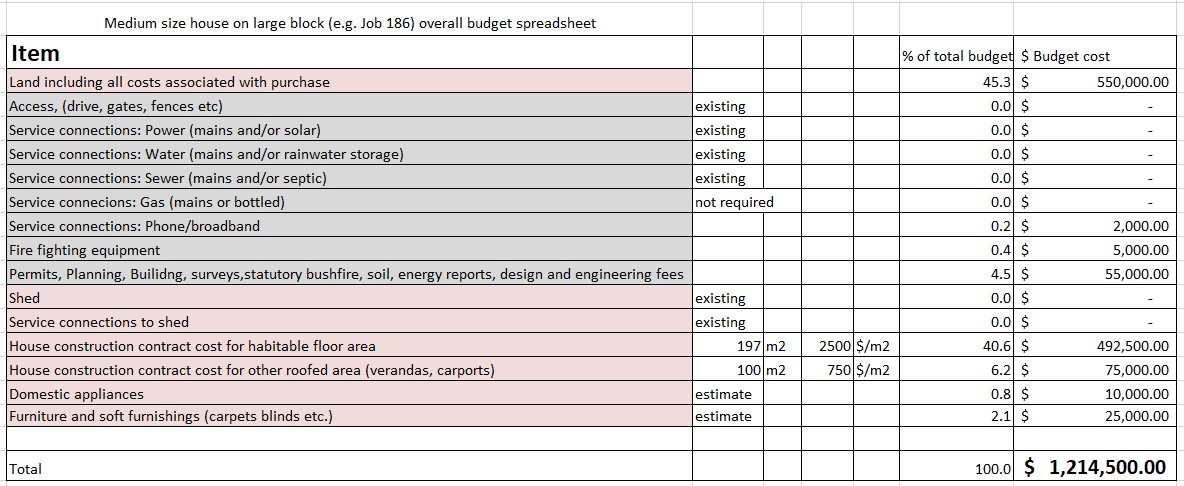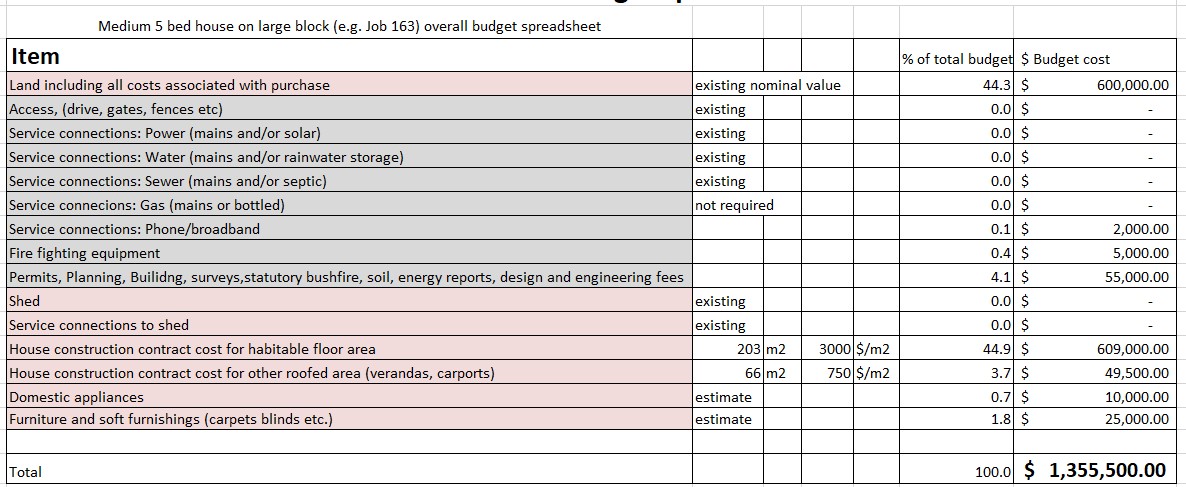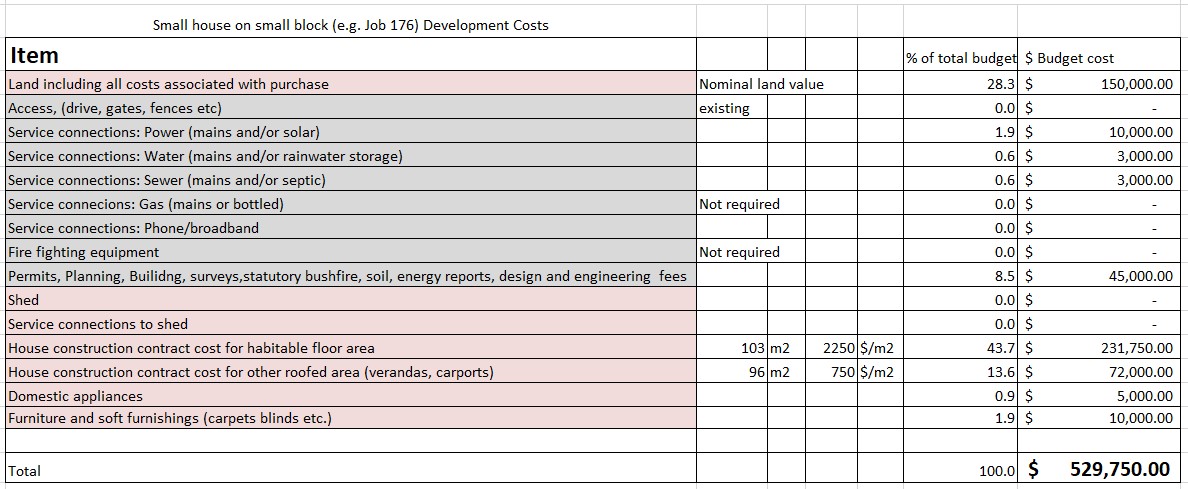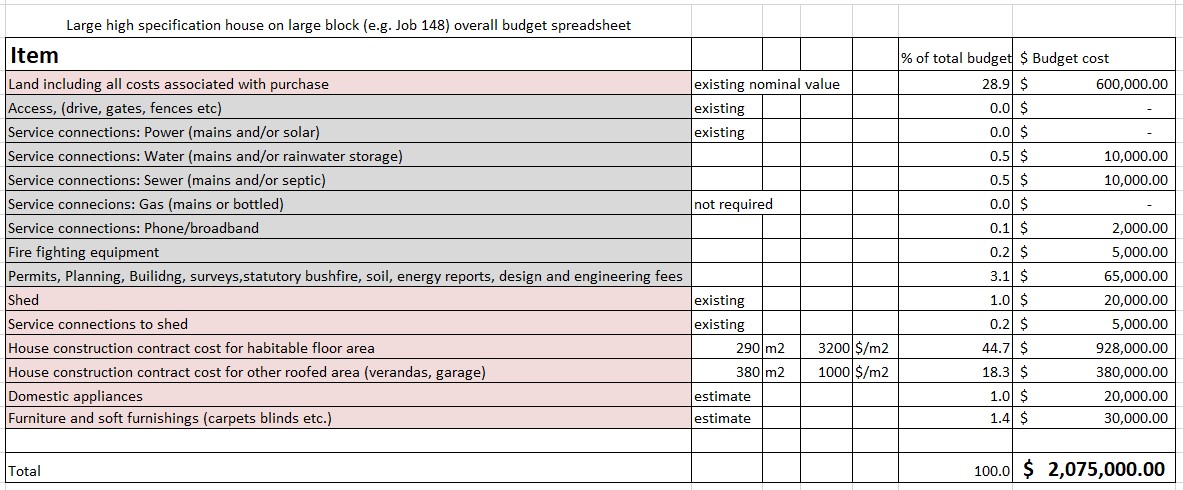PASSIVHAUS COST COMPARISON CASE STUDIES
The two projects described in this case study provide a rare opportunity to compare the cost of Passivhaus construction with standard construction for the same building. In both cases the designs were complete and priced by the builders before they were modified as necessary to achieve Passivhaus Certification.
There is currently little data on which to base assessments of the relative costs of Passivhaus and standard construction in Australia. Most PH buildings so far are individual houses which by their nature are – individual. This makes it impossible to provide a like for like comparison. Houses are rarely subjected to detailed cost analysis but it is clear that the few elements that are relevant to Passivhaus represent a small proportion of the budget (refer to the cost data in the presentation Experience from Australian Passivhaus Projects*). Of the many reasons for the variations between house costs, Passivhaus elements can only be a minor factor. The percentages below are based on the construction cost only, the proportion of the total cost of a project (including land, service connections, fees and charges) would be even lower. Because these two projects were already priced by the builders and then re-priced for Passivhaus construction without any changes to the design they provide real cost comparisons. Neither builder had previous Passivhaus experience but both are now providing Passivhaus for considerably less than the original standard construction cost.
Project 184 is classic “Passive Solar” with most windows facing the sun, Project 194 is the opposite with very large windows facing south away from the sun (in the direction of the view) but has a milder climate. They are both long, low and large. They both use standard timber frame construction with no unusual structural methods.
Without precise calculation of the effects of specification decisions, over specification causing unnecessary costs is likely. Although the actual Passivhaus elements are a small part of the budget, these other over-specification unnecessary costs can represent a greater proportion of the budget than the necessary Passivhaus elements. This makes the scope for savings greater than would initially be assumed. The Passivhaus calculation method therefore provides the information necessary to identify over-specification with cost benefits beyond the obvious comfort and energy benefits of Passivhaus Design.
An independent cost study for London University can be seen Here:
COST CASE STUDY ONE - Job 194
Summary
Overall savings of about 15% were achieved by changing from standard to Passivhaus construction.
Most of the budget remained unchanged because only a small percentage of the construction is relevant to Passivhaus.
The original design was unchanged.
The calculated heating demand was reduced from 61kWh/m2 per annum to 9kWh/m2 per annum. This would be a reduction of 11,544 kWh per year if the design temperatures were to be maintained using the original construction. (Passivhaus commonly reduces heating demand by around 90%). Due to the climate this reduction is achieved with only 90mm high performance glasswool between the wall studs. It could be reduced further by reinstating the insulation over the studs originally specified but this was not cost effective for this climate. The saving is better directed to installing a p.v. array.
The reduction in heating demand makes it possible to provide the energy from solar electricity and this building is calculated to be Passivhaus Plus.
The cooling demand remains similar since the design is optimised to minimise heating demand. Cooling is free in summer when there is excess solar electricity so it is logical to concentrate on reducing winter heating demand when solar electricity is limited. Because the cooling load was calculated rather than estimated, the cooling equipment could be reduced to suit the actual cooling load.
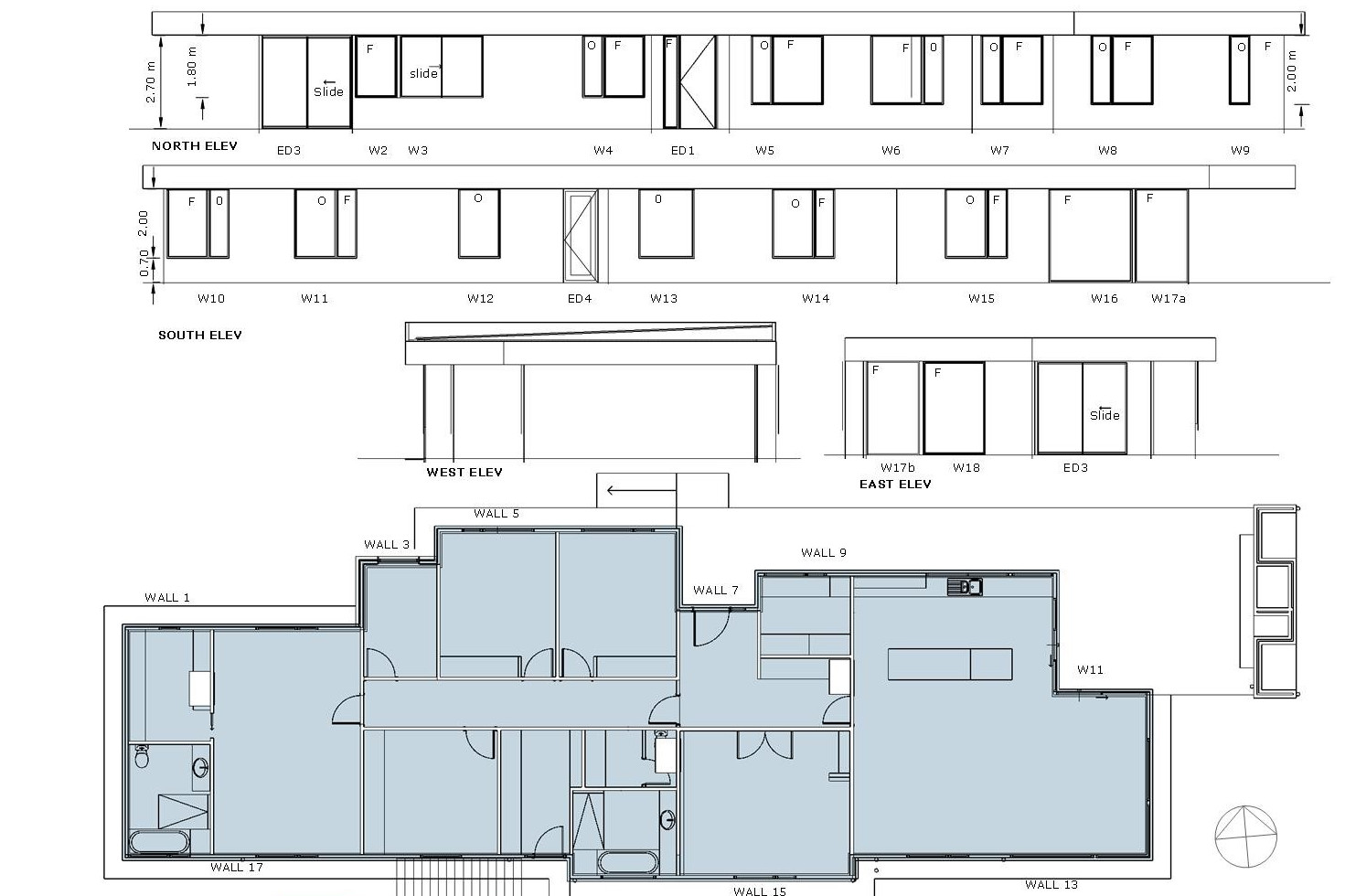
Heating demand reduced to 14% of original construction
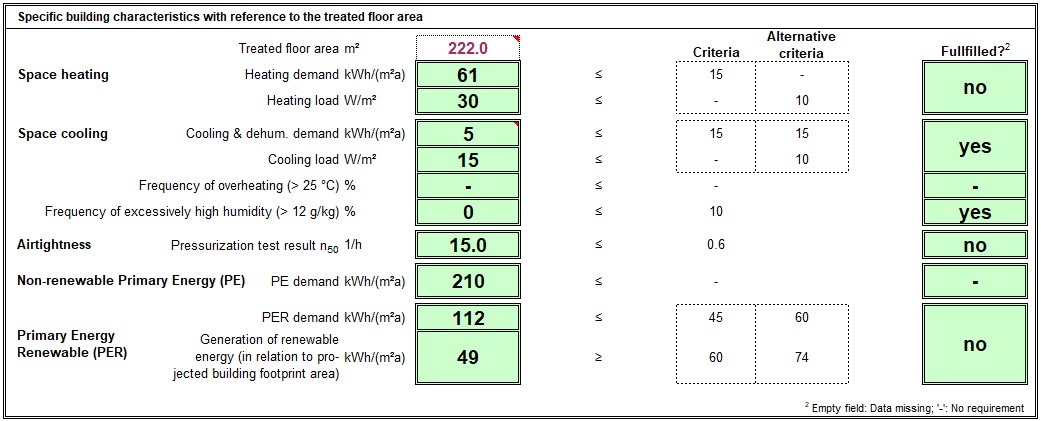
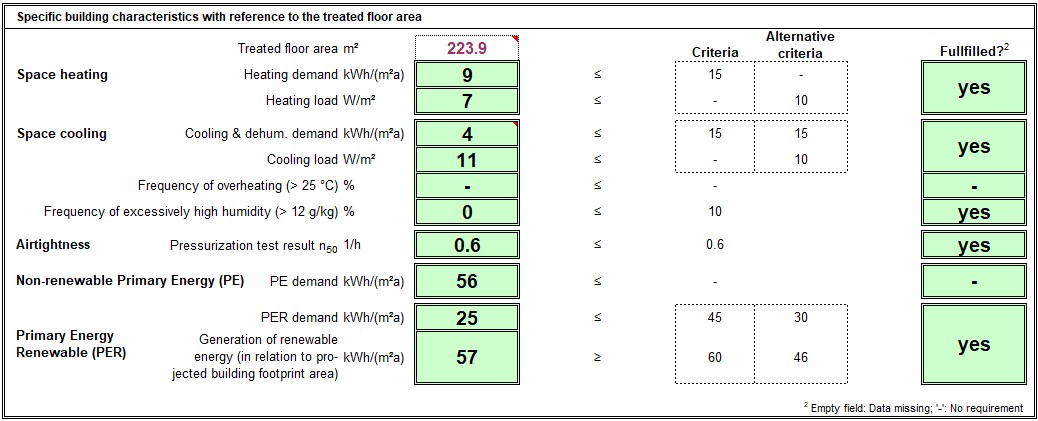
Savings for each element due to changing to Passivhaus construction
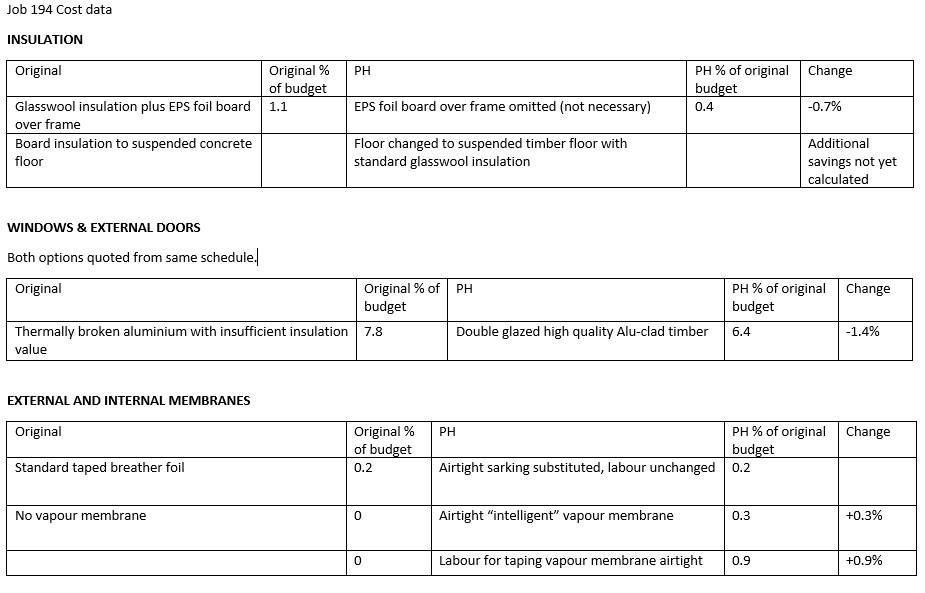
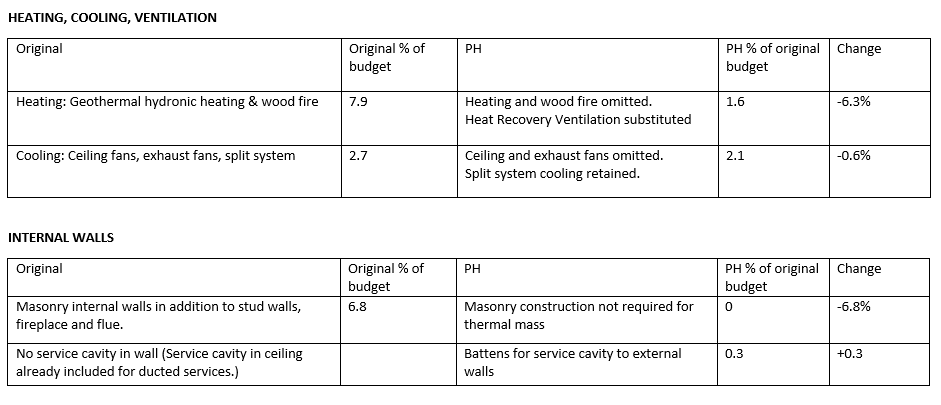
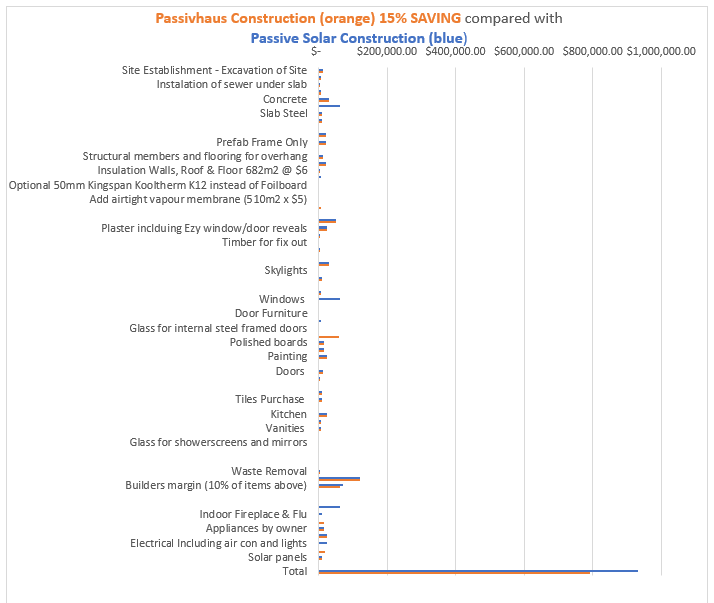
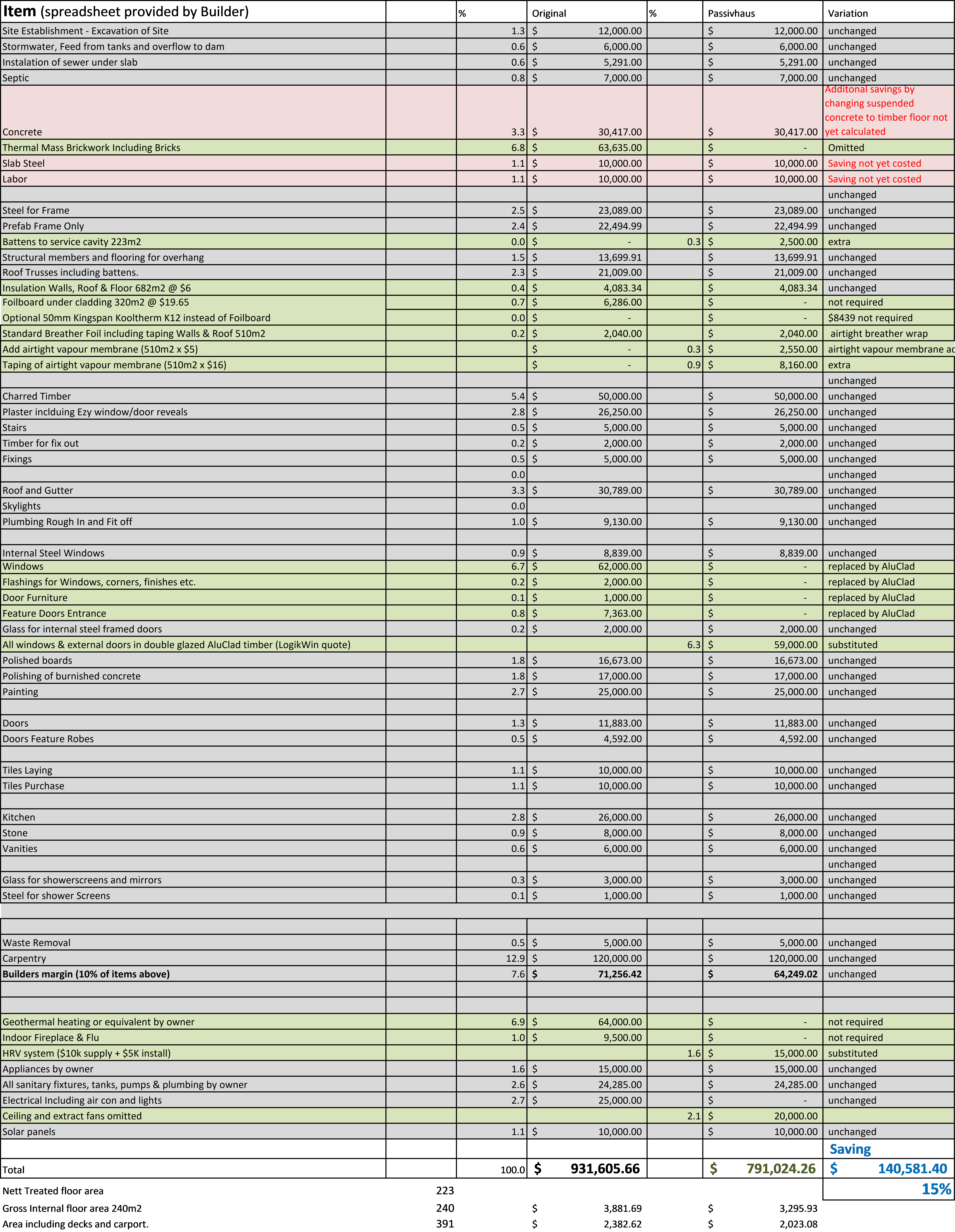
COST CASE STUDY TWO - Job 184
Summary
Overall savings of about 7% were achieved by changing from standard to Passivhaus construction.
Most of the budget remained unchanged because only a small percentage of the construction is relevant to Passivhaus.
The original design was unchanged.
The calculated heating demand was reduced from 140kWh/m2 per annum to 9kWh/m2 per annum. This would be a reduction of 47,940 kWh per year if the design temperatures were to be maintained using the original construction (Passivhaus commonly reduces heating demand by at least 90%). This would make it possible to provide most, or all of the energy from solar electricity if the owners chose to add a p.v. array and eliminate heating bills.
The cooling demand was unchanged but because it was calculated rather than estimated, the cooling equipment could be reduced to suit the actual cooling load.
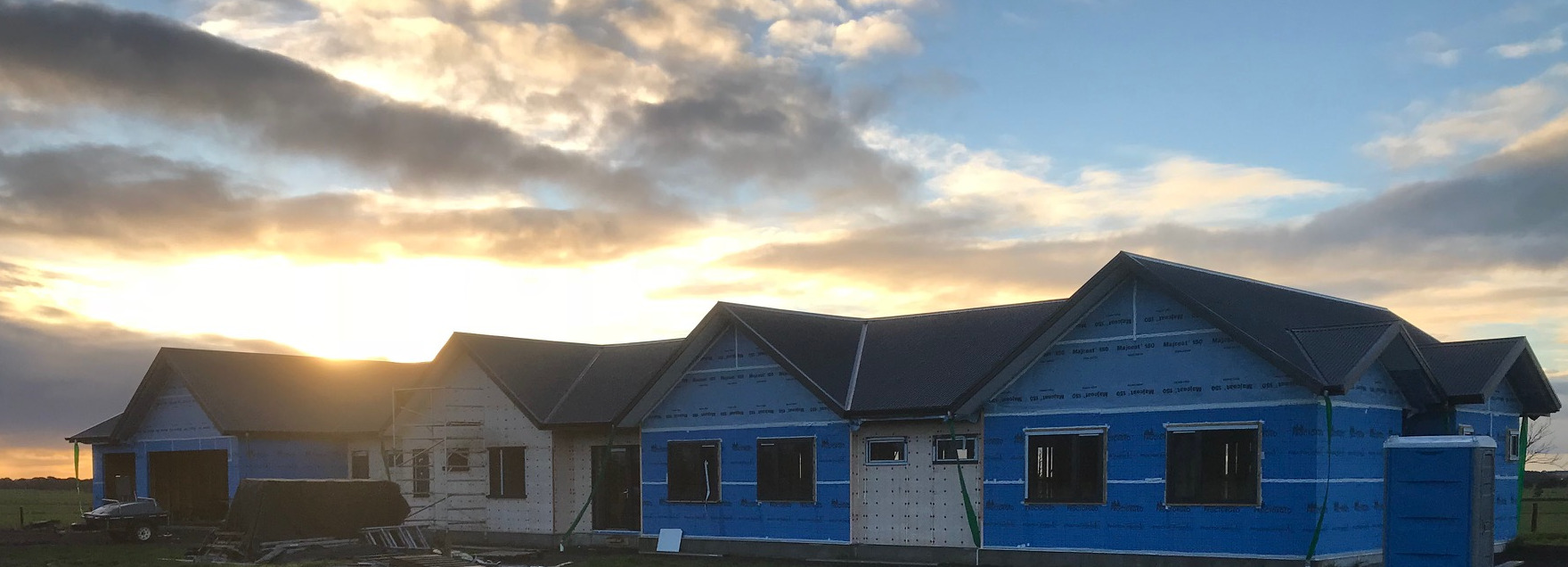
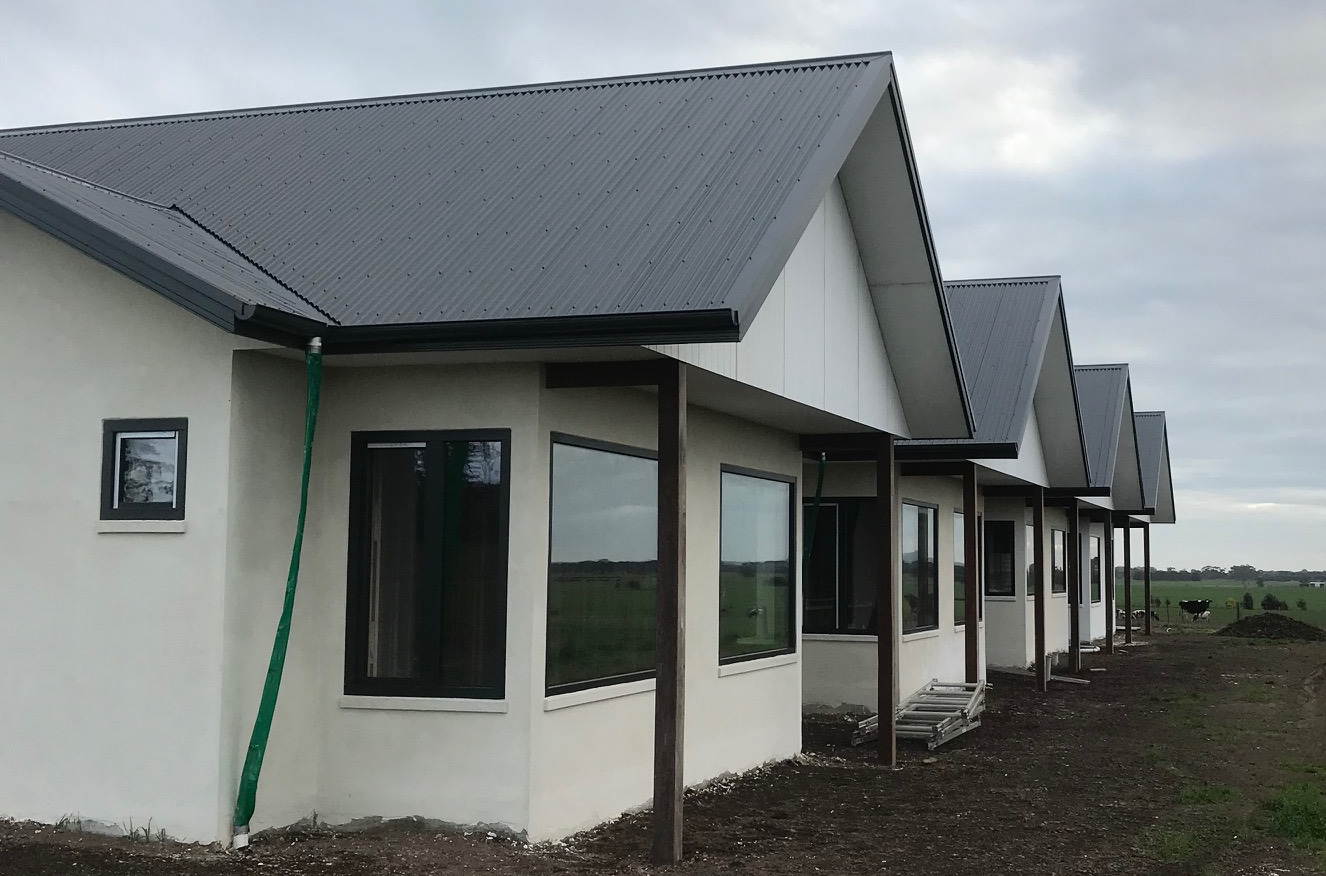
Heating demand reduced to 6.5% of original construction
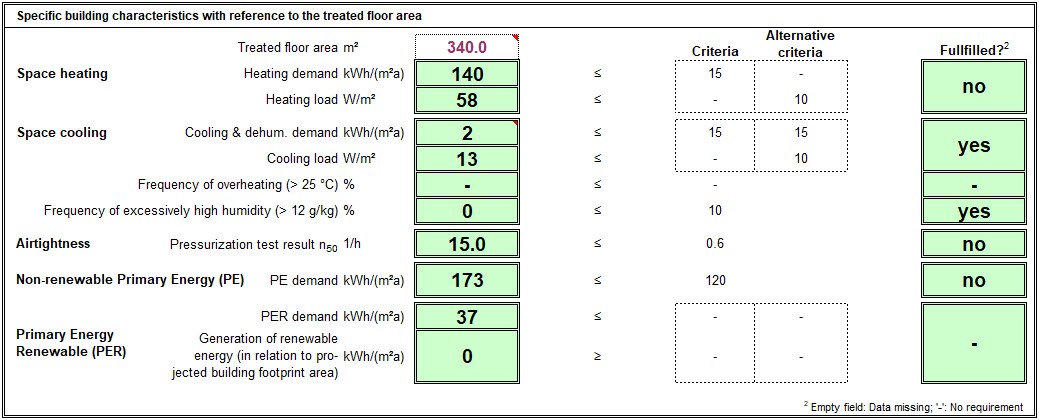
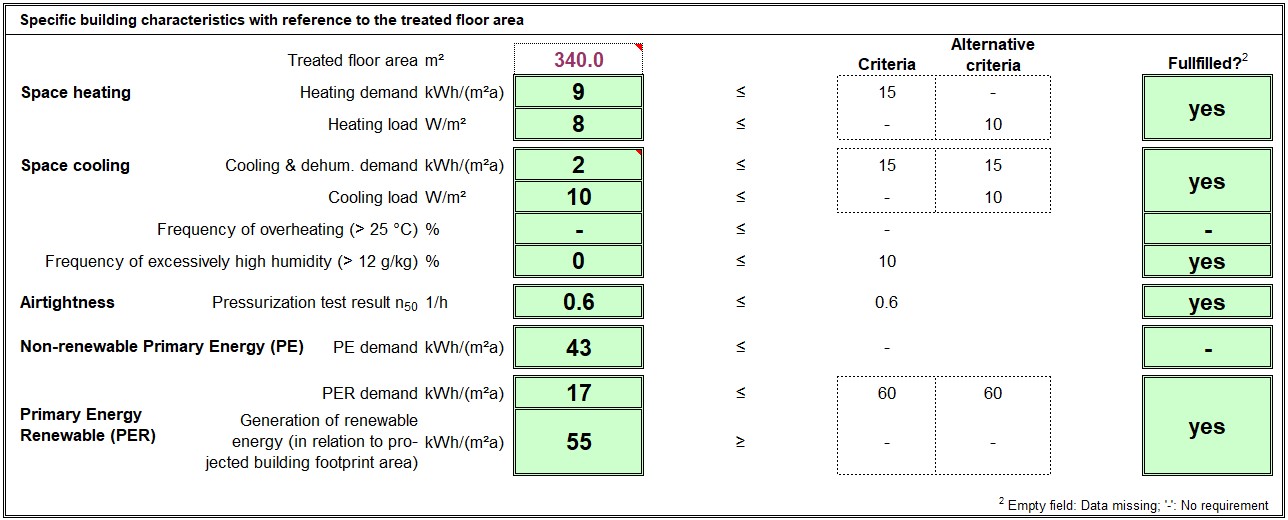
Savings for each element due to changing to Passivhaus construction
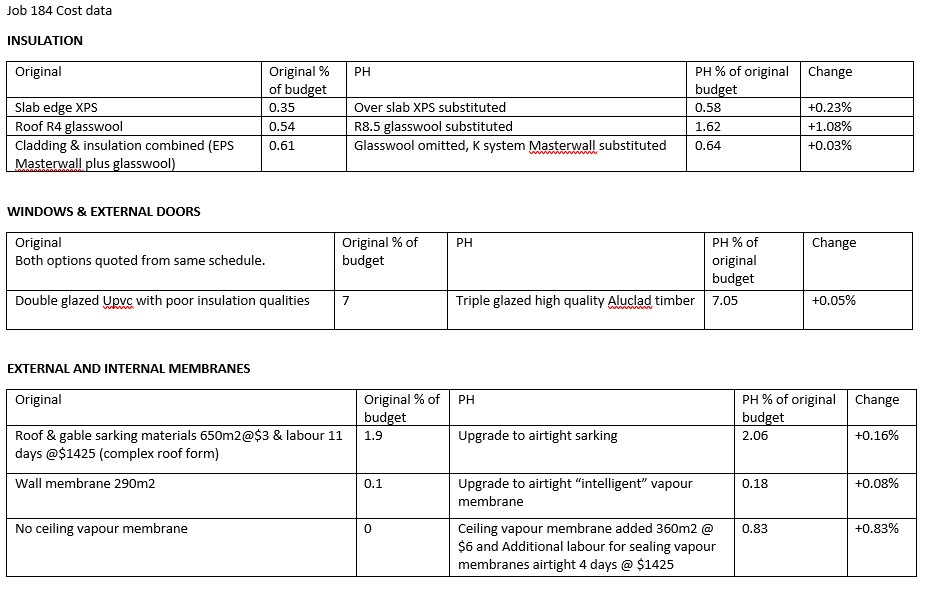
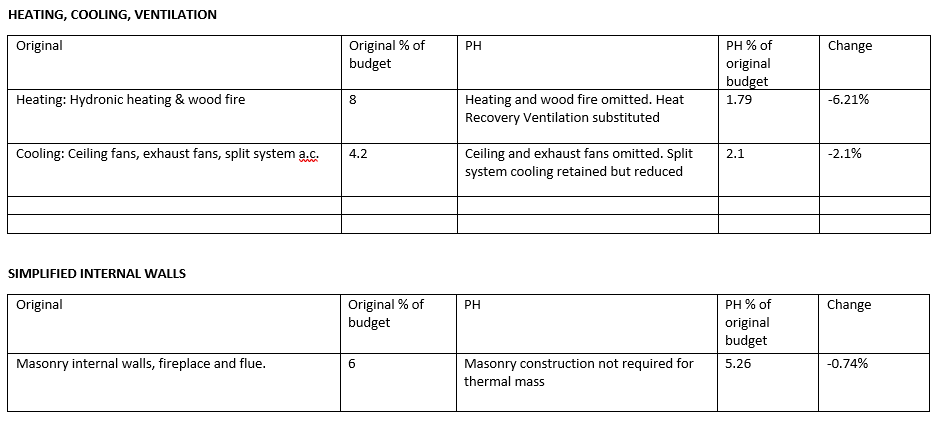
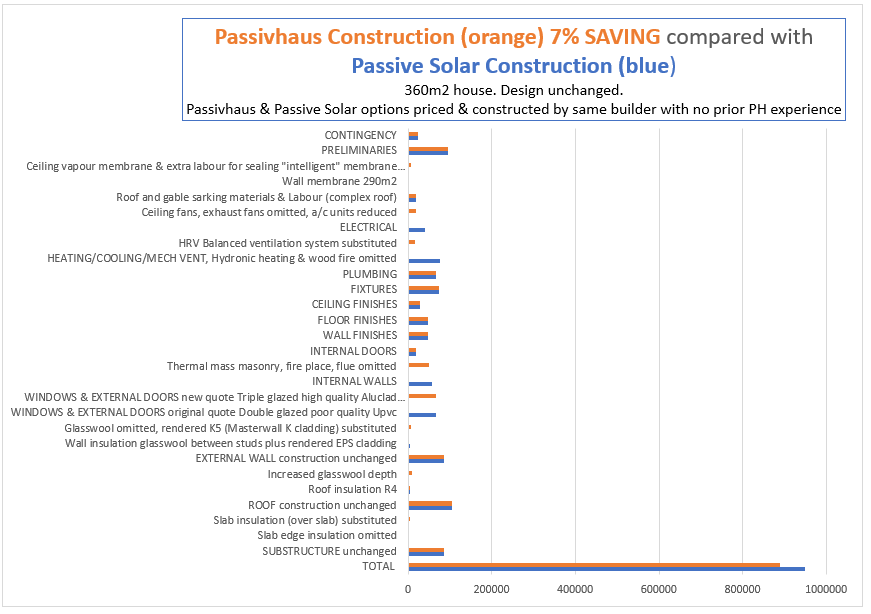
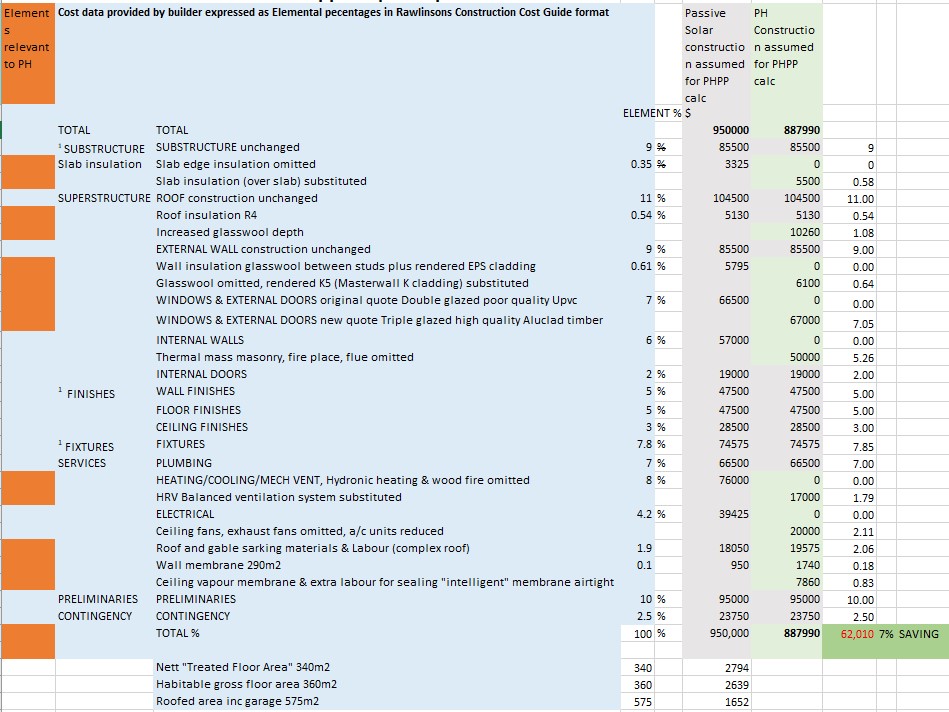
OVERALL DEVELOPMENT COSTS for individual houses
The spreadsheets below illustrate typical overall development costs for rural properties.
The price of land is very variable but often represents half of the total cost.
Other costs associated with developing the land for a house (access, service connections, planning & building permits, statutory bushfire, soil, energy reports, design and engineering fees) do not vary a great deal with the size of the development and can be around 10 to 12% of the total.
Costs for items outside the building contract such as sheds, appliances and soft furnishings obviously vary with the owner’s choices but can be a significant part of the budget.
Variations in the rate per square metre for building contracts are affected by the standard of finishes, fixtures, complexity of footings and site access. Because many of the elements such as services are the same for small houses as for large ones, the rate per square metre for small houses is greater than for large ones of the same standard although large houses often have higher specification finishes and fixtures.
Rates for individual houses quoted in Magazines such as Sanctuary vary from $2500 to $5000 per square metre. Most of the projects illustrated on the website are at the lower end of this spectrum. The construction contract cost for the house is usually less than half the total development cost for the whole property. The elements relevant to Passivhaus construction are therefore only about 5% of the total and can only provide a small saving on the full budget. For an analysis of the Passivhaus elements refer to “Experience from Australian Passivhaus Projects” and the “Passivhaus Cost Comparison Case Studies” above.
Cost breakdowns for some typical examples are given below.
